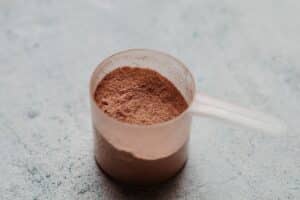
Nutrition Basics for Pregnancy
Nutrition Basics for Pregnancy: A Guide for Nourishing Both Mother and Baby By Paige Mandel, MS RD CDN “The message that a mother’s nutrient intake during pregnancy affects the


Nutrition Basics for Pregnancy: A Guide for Nourishing Both Mother and Baby By Paige Mandel, MS RD CDN “The message that a mother’s nutrient intake during pregnancy affects the
Essential Supplements for a Healthy Pregnancy: A Comprehensive Guide By Paige Mandel, MS RD CDN If you are pregnant or trying to conceive (TTC), one of the first (of many)

Embracing Body Changes During Pregnancy: 5 Empowering Tips By Rebecca Jaspan, MPH, RD, CDN, CDCES, and Laura Cipullo, RD, CDCES, CEDRD-S, RYT Having a positive body image is challenging

Supplements for Athletes: Enhancing Performance and Recovery By Rebecca Jaspan, MPH, RD, CDN, CDCES If you’re an athlete, you may have read about or were recommended to add supplements

Supplements for Athletes: Maximizing Performance and Recovery By Rebecca Jaspan, MPH, RD, CDN, CDCES If you are an athlete, you may have considered taking supplements to enhance performance. While

Key Supplements for Teens: Supporting Adolescent Nutrition By Reva Schlanger, MS, RD Adolescence is a time of excitement and dread. Changes are happening both physically and mentally at this

Navigating Children’s Vitamins: Which Ones Are Necessary? By Paige Mandel, MS RD CDN The supplement space can be incredibly confusing for adults and children alike. But as a

To Supplement or Not? Navigating the World of Dietary Supplements By Rebecca Jaspan, MPH, RD, CDN, CDCES Dietary supplements include vitamins such as vitamin C or E, minerals such

Nutrition Essentials for Dancers: Fueling for Performance and Health By Paige Mandel, MS RD CDN Many sports highlight nutrition for performance and endurance, yet dance is one that

The Essential Guide to Protein Powders: Types, Benefits, and Selection Tips By Reva Schlanger, MS, RD, CDN, LD A lot of us know that protein in our daily intake

Sign up for Laura Cipullo’s Nutrition & Wellness Newsletter to receive expert guidance on mindful eating, balanced nutrition tips, and practical advice for living a healthier, happier life. Choose what topics you want to hear about to get the resources you need.

Copyright © 2024 Laura Cipullo